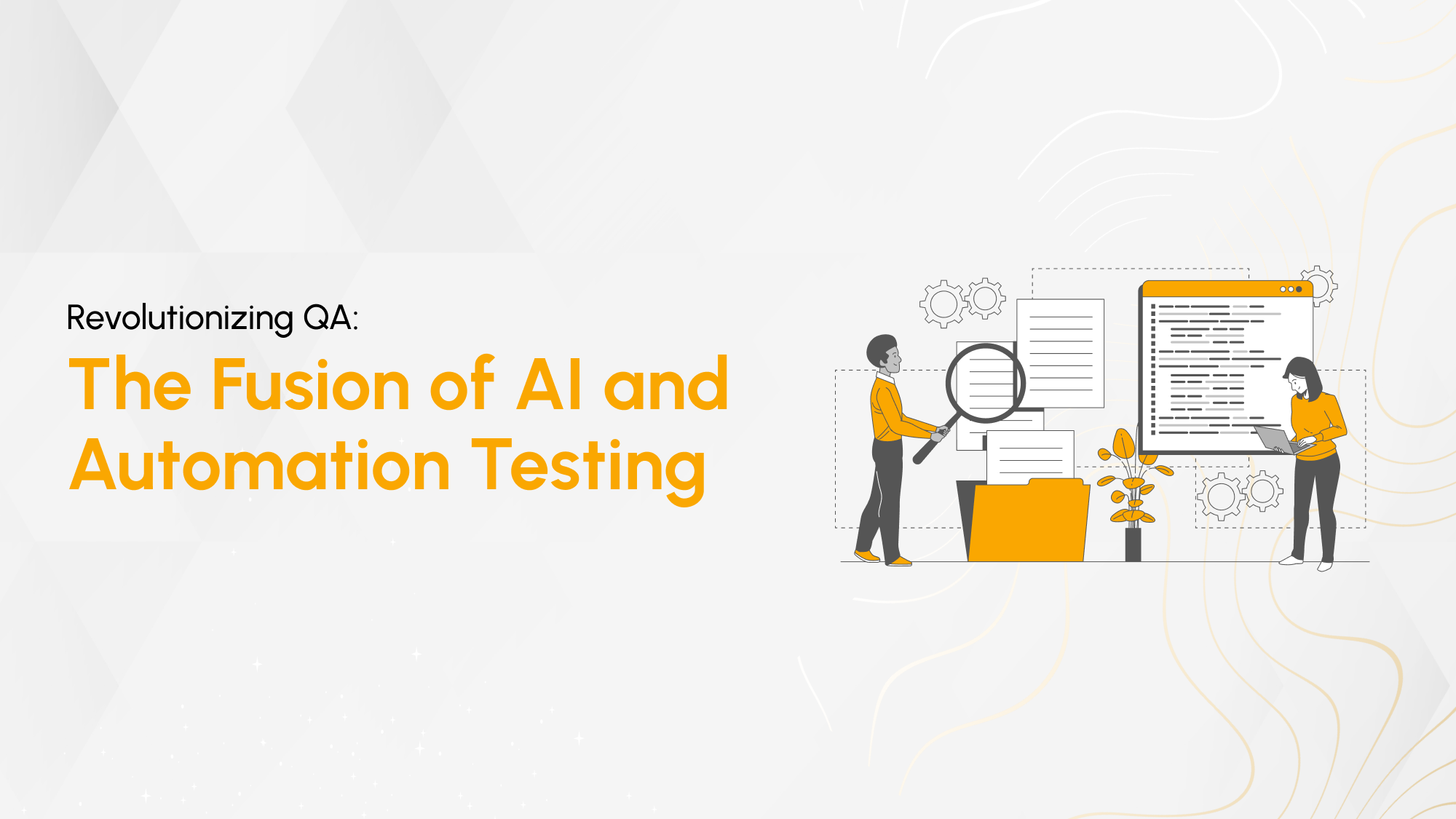The Fusion of AI and Automation Testing: Revolutionizing QA

In the field of physics, fusion is a process where the smallest components of atoms are forced to join together, creating a new atom and releasing an immense amount of energy.
Similarly, we are combining AI (the new cool guy in the room) and Automation Testing (the good old boss). With these two together, they can produce much more promising outcomes and increase efficiency.
This fusion of AI and automation testing enhances the entire testing life cycle from test creation to execution and maintenance. AI brings intelligence to automation, enabling more efficient, adaptable, and comprehensive quality assurance processes.
Imagine all these things:
- Someone fixes the automation scripts automatically that keep on failing because of UI changes.
- Someone predicts the issues/bugs even before they are discovered.
- Someone generates all the test cases.
- Someone reviews your test scripts and optimizes them.
- Someone generates test cases using natural language.
- Someone finds the root cause of why the scripts are failing.
That someone is AI. The right usage of AI can help us in all the above-mentioned scenarios.
How AI Enhances Automation Testing
1. Fixing Automation Scripts Automatically
- Continuously monitor the execution of automation scripts.
- Analyze the error messages and logs to understand the nature of the failure.
- Compare the current UI structure with the expected structure in the script.
- Match these elements to their previous counterparts based on context, position, and function.
- Update selectors, XPaths, or other locators in the script to match the new UI structure.
- Learn from each fix, improving its ability to handle similar changes in the future.
2. Predicting Issues/Bugs
- Analyze historical data of past bugs and issues.
- Assess the code to find areas of high cyclomatic complexity that are prone to bugs.
- Evaluate the probability of different types of bugs occurring in specific code sections.
3. Generating Test Cases
- Analyze project requirements, user stories, and specifications using natural language processing.
- Perform static code analysis to understand the structure, logic, and data flow of the application.
- Cover various scenarios, including positive cases, negative cases, boundary conditions, and edge cases while generating test cases.
- Create realistic test data to be used in the test cases.
4. Generating Test Cases Using Natural Language
- Extract key information like features, expected behaviours, and constraints.
- Interpret the meaning and intent behind the natural language descriptions.
- Identify actions, conditions, and expected outcomes.
- Formulate test cases in natural language, describing the steps, inputs, and expected outcomes in clear human-readable language.
5. Finding the Root Cause of Failing Scripts
- Analyze error logs, console outputs, and system logs.
- Identify patterns in failing scripts, looking for common elements or sequences.
- Trace the flow of data through the script, identifying where unexpected values or states occur.
- Detect unusual patterns or behaviours that deviate from normal operation.
- Flag anomalies as potential root causes.
Enhancing Existing Test Suites
If you have an existing test automation suite, AI can help you in enhancing it. Here’s how:
1. Test Case Optimization
- AI analyzes test execution history to identify redundant or low-value tests.
2. Dynamic Test Data Generation
- AI generates realistic, context-aware test data.
3. Self-Healing Scripts
- AI automatically updates test scripts when UI elements change.
Suggested Reads- A Comprehensive Guide to Writing Effective Software Test Cases
Example of an AI-Driven Test Automation Tool
Testim's AI-Powered Test Automation Platform is an example of AI-driven testing. Testim has integrated AI into automated testing, offering a different approach to some aspects of the testing process.
1. AI-Powered Element Locators
- Instead of relying solely on traditional locators (like XPath or CSS selectors), Testim's AI analyzes multiple attributes of each element.
- It creates a "smart locator" that can find elements even when the UI changes.
2. Automatic Test Creation:
- The platform records user actions as they navigate through the application.
- AI then converts these recordings into robust, editable test scripts.
3. Dynamic Test Stabilization:
- During test execution, the AI continuously adjusts to minor UI changes.
- This significantly reduces test flakiness and maintenance overhead.
4. Anomaly Detection:
- The AI learns the normal behaviour of the application over time.
- It can flag unexpected behaviours or performance issues even if they don't cause test failures.
5. Intelligent Wait Times:
- Instead of using fixed wait times, the AI dynamically adjusts wait times based on the application's actual load time.
6. Codeless Test Creation and Editing:
- While tests can be created without code, developers can also add custom JavaScript for complex scenarios.
- The AI assists in suggesting relevant code snippets based on the context.
Conclusion
We're living in exciting times for software testing. Remember the days of mind-numbing manual tests and flaky automated scripts? Those are becoming a thing of the past. With AI joining the party, we're seeing smarter tests, fewer headaches, and the kind of efficiency we used to only dream about.
The integration of AI in Software Testing has brought about a paradigm shift in how testing is approached. AI-driven tools automate repetitive tasks, predict potential issues preemptively, and optimize the testing process. This not only improves the accuracy and efficiency of testing but also significantly reduces the time required to bring high-quality software products to market.
Companies offering Software Testing Services are now better equipped to handle complex testing scenarios, ensuring robust and reliable software applications.
